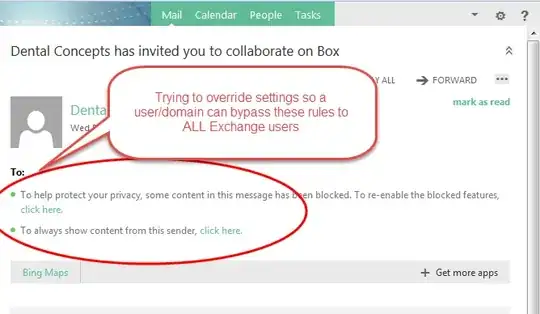We are using Exchange 2013 for multi-tenant email hosting and I am trying to create a policy that will always show remote content from a specific sender domain (or single sender is fine too) in OWA.
We send out weekly reminders in an HTML email that reference external images and these images are always blocked.
Things I have tried:
- Manually adding an email address to the safe sender list under "block or allow"
Set-MailboxJunkEmailConfigurationto add our email address to theTrustedSendersAndDomains- Creating a mail flow rule to bypass spam filtering for our domain
Set-ContentFilterConfig -BypassedSenderDomains *.ourdomain.comto bypass content filter for our domain
No matter what OWA still prompts for the remote content to be downloaded with each sign in.
The goal is to have a configuration that would automatically download remote content for ALL exchange users when the sender is a specific email address or domain. Is this possible with Exchange 2013 & OWA?
Here is an image showing what I would like to bypass:

Ideally, a rule or setting can be changed so user@domain.com is exempt from having content blocked in OWA. If not, then a command that could be run periodically or when we add new mailboxes to apply the setting to each mailbox is fine too.
Thanks